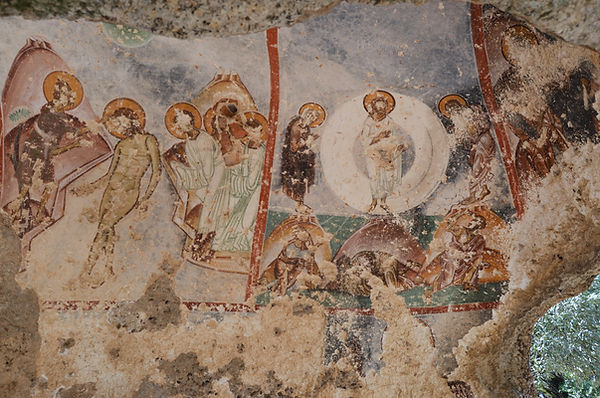Latmos (Latros) was a monastic center in Caria, northeast of Miletos. Its numerous forts, fortified monasteries, and hermits' caves were located on islands in the lake of Herakleia (Bafa) and immediately to the east on the slopes of Mt. Latmos (modern Beşparmak), mostly are anonymous. The early history of Latmos is obscure. According to local tradition, it was settled in the 7th century by monks fleeing the Arab invasion of the Sinai. When the monk Paul of Latros came to the region in the early 10th century, three monasteries already existed there: Kellibara, the Savior, and Karya. Paul founded the Stylos (named probably in honor of the apostle Paul, the "pillar" of the church), which was dedicated to the Theotokos. Leo VI granted the monastery a proasteion and other lands. Latros flourished during the empire of Nicaea; in 1222, 11 monasteries were under the authority of its kathegoumenos and archimandrite, a title disputed between the superiors of Stylos and Kellibara. By the end of the 13th century, however, Latros was in decline as a result of Turkish encroachment; Kellibara with only nine monks was merged with Michael VIII's new foundation of St. Demetrios in Constantinople. By the 14th century Latros disappears from the sources. Painted Gospel cycles in a cave chapel at Yediler—probably to be identified with Kellibara—and in the Stylos have been variously dated in the11th-13th century. The Stylos also contains scenes of the funeral of Paul and other scenes from the saint's life.
Section under construction
.jpg)
.jpg)




.jpg)
.jpg)
.jpg)
.jpg)
